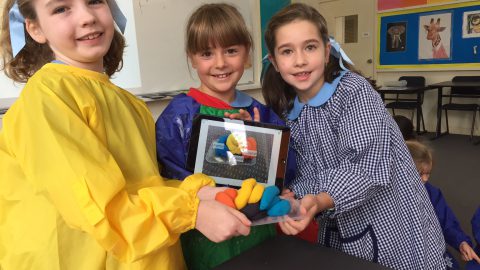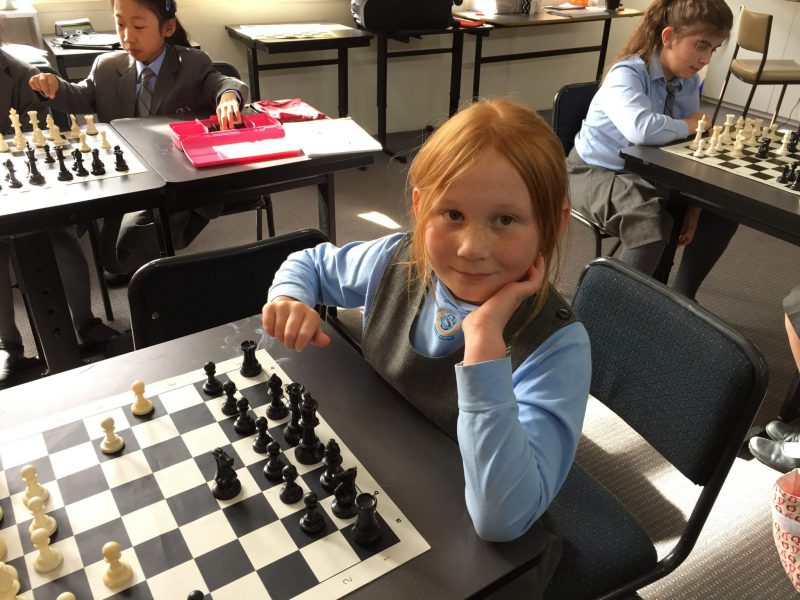Barbreck News

Attention to Detail and Focus
Effective learning requires application and is paralleled by a learning atmosphere with established routines and high expectations. The expectations, particularly with regard to attention to detail and learner focus, are markedly evident in Barbreck classrooms.
Barbreck educators role model and constantly encourage all our learners to engage well, take pride in the completion of tasks, pay attention to detail and to focus. Thus, enabling the positioning of sound skill acquisition and links to be meaningful. Our 2017 Prep students, now well established at school, have demonstrated highly pleasing progress in these areas required for effective learning to take place. The transition from Mrs Jess Easton to Ms Annie Taylor, who has now taken over the Prep Class, has been a smooth and very pleasing one.
Assisted by Ms Kate Bourke, Miss Annie Taylor is ensuring that the solid work already completed in Term 1, is replicated in style and with the same energy and expectations.
For learners, the maintenance of high motivation must be a constant drive.
Counting in Prep E
In Prep E, we are exploring many concepts within mathematics. A continuing focus is on the skill of counting. Specifically, counting with 1:1 correspondence, matching quantities to numerals, ordering numbers and naming numbers. During several lessons, we worked as a team to explore the idea of ordering numbers.
As a class, we brainstormed what the word ‘order’ meant and how we could apply this concept to counting and numbers. In groups of three, students worked with cards labelled with the numbers 0-10 and placed these in order. It was great to watch and listen as the students worked cooperatively to find numbers, count, recount and reorder any numbers which were out of place. Once students were happy with their order, the next step was to count a series of dot cards that represented a quantity between 0-10. Students helped each other to count (with 1:1 correspondence and care) and worked to match these quantities with their corresponding numerals/numbers.
When the students felt confident, the next step encouraged them to explore ‘teen numbers’. The cards 11-20 were added to each group. Using our little rap, ‘numbers in the teens they start with a one’, the students worked diligently to order and match the ‘teen numbers’. With the cards placed in order, students were able to understand the connection between teen numbers and the numbers 0-10. We started to investigate the idea of number patterns 0, 1, 2, 3, 4, 5, 6, 7, 8, 9 and then back to 0. This is a concept we will revisit many times throughout the year.
Mathematics in Prep E is all about developing confidence with mathematical concepts and most importantly having fun. It was wonderful to see the students challenge themselves and enjoy achieving success. One of our students, Serena Ma, has even made a “guess the number game” to consolidate her understanding.
Prep E love Maths and are mastering their counting!
Miss Annie Taylor, Prep teacher
Year 2 Koorie Heritage Trust
As part of the Term 2 Year 2 Unit of investigation into Aboriginal culture, the students visited the Koori Heritage Trust at Federation Square. Students were given a guided tour of the ‘Birrarung Wilam Walk’, which runs alongside the Yarra River at Birrarung Marr. Students enjoyed learning about traditional hunting and gathering techniques, used by local people of the Kulin Nation and were thrilled to be taught traditional indigenous dancing techniques. The behaviour and responses of the girls reflected how engaged and interested they were throughout the entire day. The teachers were very thankful for the help volunteered from the parents who accompanied the girls on the excursion.
At the Koorie Heritage Trust we learned that, aboriginal people killed animals for food. Men and women had different jobs, the woman weaved fish traps and baskets.
Ziabella 2R
We learned that indigenous people dance for special occasions and that men and women dance differently. Koorie people used a message stick to welcome people to their country. They also had an emu caller that was made out of a hollow stick.
Mietta 2I
I learned that Koorie people hunt animals for food, clothes and toys. They used different boomerangs for hunting and dancing.We also saw an emu caller that went boom, boom, boom!
Alexa 2I
At the Koorie Heritage Trust we learned that aboriginal people used possum skins to make clothes and footballs. I also learned they used boomerangs to make music and hunt birds. The Koorie people respected the land and cared for it.
Polly 2R
The National Assessment Program 2017 (NAPLAN)
Last week, the Years 3 and 5 students completed NAPLAN testing. The testing went very smoothly with nearly full attendance and participation by our students. For students who were absent, catch-up sessions were run throughout the week where possible.
As much as we try to ensure that NAPLAN testing is viewed as a regular part of the school week, it can still be a little daunting and tiring for some. The girls were conscientious throughout the testing and tried their very best. They are congratulated for their efforts and concentration.
The NAPLAN assessment measures achievement in literacy and numeracy. Its primary purpose is to provide the government, education authorities, and schools with data that can help determine whether or not young Australians have the literacy and numeracy skills that provide the critical foundation for other learning, and for students’ productive and rewarding participation in the community.
However, the tests also provide the School with information about how education programs are working and which areas may need to be prioritised for improvement. In addition to this, they provide parents and schools with an understanding of how individual students are performing at this point in time. It allows us to identify the strengths and areas for improvement within the school and provide classroom teachers with information as to how the students’ achievement compares to a wider group of students across Australia. Individual reports can also be used to inform discussion between parents and teachers.
In the Junior School, we have an extensive and on-going assessment schedule, which is determined by classroom and support teachers. Assessments incorporate a combination of formative and summative assessments, providing us with invaluable information about each student’s performance. NAPLAN tests are another piece of valuable data that we collect as part of this process.
Later in the year, parents of students in Year 3 and 5 will receive their child’s personal NAPLAN report. The report shows a child’s performance for each NAPLAN test, and how a student performed in relation to national standards. Teachers are always very happy to discuss these results further.
We are confident that the information parents and the School will receive as a result of students participation in the NAPLAN tests, will add to the existing data already gathered this year and will all be utilised to add value to student programs.
Chess in Barbreck
It has been my pleasure this Term to run the Years 3-6 Chess Club on Friday at lunchtime, along with the expertise of Ross Neumann from Chess Ideas. It has been wonderful to see the strong interest and engagement from a number of girls.
Each week, the students and I arrive with our lunch for a quick 10-minute lesson, before putting our skills to the test, playing one-another in mini-tournaments. I have particularly enjoyed learning along with the girls. Chess has always been a game I have enjoyed, but I have to admit that my chess skills, up until this point, have been very basic, with very little understanding of strategy or tactic. However, one of the most enjoyable aspects of being involved in the Chess Club each week, is learning something new and putting that into practice, alongside the girls. We can all become quite competitive!
As well playing just for the enjoyment of it, Chess has the potential to add great value to overall learning, both from an academic and social perspective. The skills, attributes and mindset required to learn and play Chess, are remarkably in-line with what recent research highlights as the 21st century skills required for our children to be prepared for their futures, as well as what skill sets employers are looking for in candidates. Chess requires a combination of creativity, communication, collaboration and critical thinking. Mentioned below are just some of the benefits:
- Playing the game can improve the logical and sequential thinking, analytical and reasoning skills, and decision-making ability of the child.
- Chess helps students understand strategy and tactic: helping them recognise the importance of foresight and planning.
- Promotes sustained concentration, memory and focus.
- Practicing Chess regularly aids in improving self-confidence of a child, which is essential for their growth.
- Reinforces mathematical concepts. Chess is a game of prediction, calculation and pattern recognition. Predicting consequences and pattern recognition are key elements of mathematics.
- Encourages an understanding of game play. Fair play, competition, winning and losing.
- Provides opportunities to meet new friends and find common interests.
If your daughter is showing an interest in Chess, I encourage you to dust off the chess set at home and have a game.







